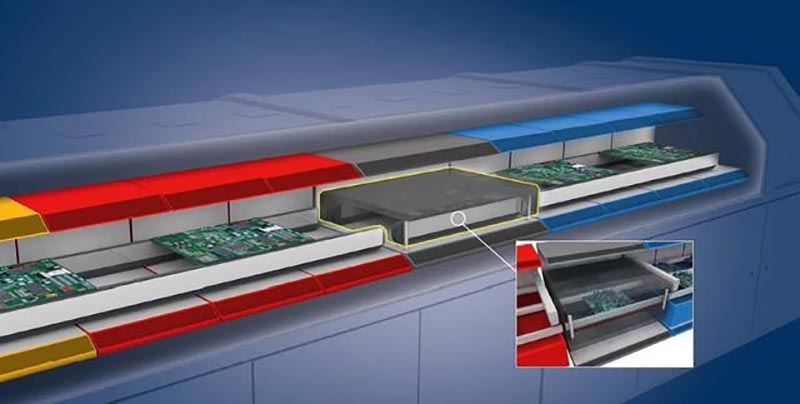What is a weld cavity? Why do weld voids occur? What should I do about solder voids?
During a recent trial production phase of a new customer order, during the manufacturing process of electronic assembly (PCBA), our engineers routinely found signal loss and noise increase during high frequency signal transmission during the first product inspection.
What are solder voids?
Solder paste printing reflow solder voids are pockets of gas or air that appear inside the solder joint when electronic components are attached to the substrate through the solder paste printing and reflow soldering process in surface mount (SMT) technology.
Voids created during the solder paste printing reflow process can negatively impact the performance and reliability of electronic products. The following are some of the major problems that can be caused by voids:
1、Affect electrical performance: Voids can cause an increase in the resistance of the solder joint, which can reduce the electrical performance of electronic devices and may lead to loss of signal transmission, increased noise and other problems.

2、Reduce the strength of the solder joint: voids reduce the actual contact area between the solder and the substrate and components, which reduces the mechanical strength of the solder joint and increases the risk of fracture of the solder joint.
3、Lead to poor thermal conductivity: Voids will reduce the thermal conductivity of the solder joint and affect the heat dissipation of the component, which may lead to component overheating and performance degradation.
4、Accelerate fatigue failure: Voids may become the starting point for fatigue failure of solder joints. Due to thermal cycling and mechanical stress, voids may expand and lead to fracture of solder joints.
5、Affect reliability: Voids can affect the reliability of the solder joint and may lead to an increased failure rate of electronic devices in harsh environments.
Causes of solder voids
There are many reasons for voids in the solder paste printing reflow process, the following are some of the main causes:
1、Air bubbles: Air bubbles may be present in the solder paste, and during reflow soldering, the bubbles expand with heat and form voids after the solder paste melts. The source of air bubbles may be the manufacturing, storage or printing process of the solder paste.
2、Volatile components: Volatile components in the solder paste will turn into gas during the heating process, and if they do not evaporate sufficiently, cavities will form.
3、High reflow temperature: Excessive reflow temperature may cause the volatile components inside the solder paste to evaporate rapidly and form a cavity.

Solution
To reduce or avoid the generation of voids, try the following methods:
1、Optimize the solder paste printing process: Select the proper solder paste viscosity, printing pressure, speed and cleaning frequency to ensure that the solder paste is spread smoothly and evenly on the substrate during the printing process.
2、Use the right solder paste: Select the right type of solder paste to reduce the probability of cavity generation. High quality solder paste can reduce the generation of air bubbles inside the solder paste, thus reducing voids.
3、Preheat stage optimization: Properly adjust the preheat temperature and time so that the volatile components and gases within the solder paste can be completely evaporated during the reflow process.
4、Optimize the reflow process: Adjust the reflow temperature, time and speed to ensure that the solder paste is fully melted and forms a good connection with the pad, while allowing sufficient time for the air bubbles inside the solder paste to escape.
5、Conduct inspection and quality control: Use X-ray inspection equipment to inspect the quality of the solder, and make timely adjustments and improvements after finding cavity problems.
Tortai has focused on providing highly reliable electronic assembly and manufacturing services for 16 years, mainly focusing on medical, new energy, automotive electronics, security, communications, AI and other fields. The core technical team members have more than 20 years of experience in electronic product design, development and manufacturing, and have so far provided highly reliable electronic assembly services to more than 300 customers from different industries in more than 40 countries and regions around the world.


